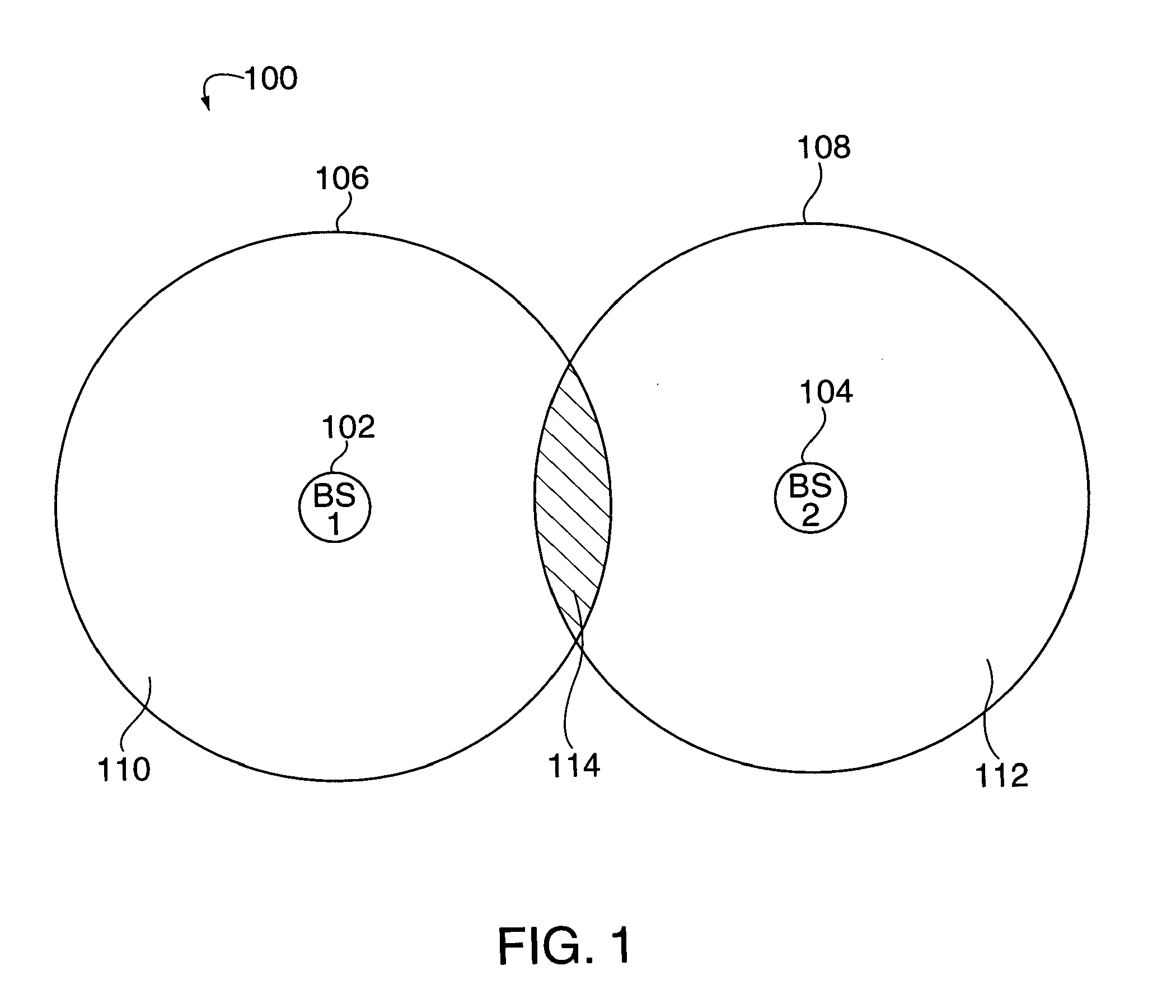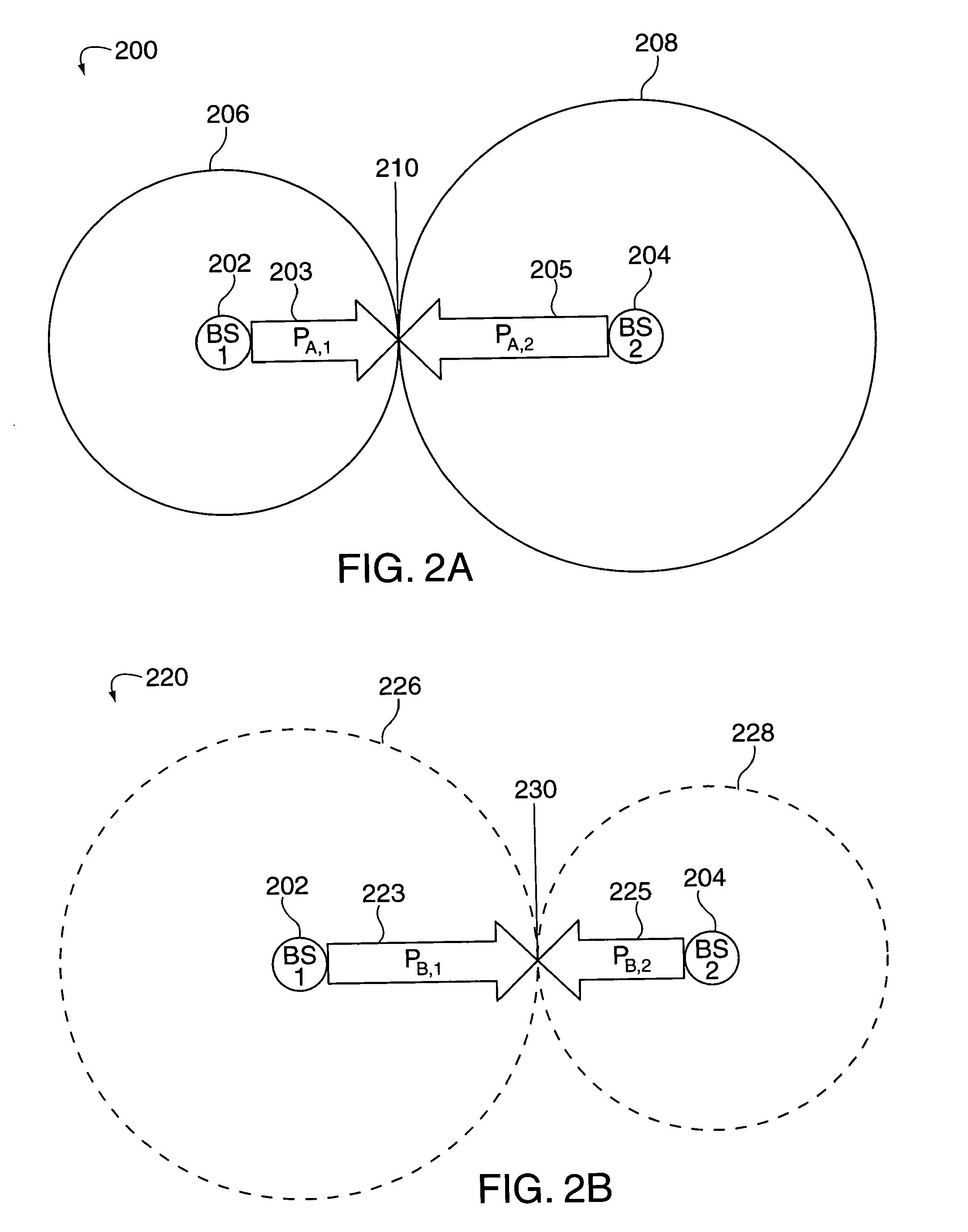Method of creating and utilizing diversity in a multiple carrier communciation system
a communication system and multi-carrier technology, applied in data switching networks, synchronisation arrangements, high-level techniques, etc., can solve the problems of low reliability and poor quality of service, and achieve the effect of reducing the effect of boundary interference, minimizing or reducing the effect of reliability
- Summary
- Abstract
- Description
- Claims
- Application Information
AI Technical Summary
Benefits of technology
Problems solved by technology
Method used
Image
Examples
Embodiment Construction
[0037]When a large amount of bandwidth is allocated to a cellular system, the bandwidth is often divided into two or more portions, each of which has a distinct carrier deployed. The spectrum assigned to each distinct carrier deployed may or may not be adjacent. These deployments are called multiple carrier systems. In a multiple carrier system, deploying a spread spectrum technology, the bandwidth associated with each carrier may be reused in all cells.
[0038]The current invention is directed to methods and apparatus for improving the service at the cell boundaries and sector boundaries of a multiple carrier spread spectrum system, by creating and utilizing ‘multiple carrier diversity’ as described below.
[0039]Normally, in a communications system, the system is engineered for one carrier. If a second carrier is added, to be used by the same base station, typically, the same design parameters, e.g. power requirements, etc., are used resulting in the same coverage area for both carrie...
PUM
 Login to View More
Login to View More Abstract
Description
Claims
Application Information
 Login to View More
Login to View More - R&D
- Intellectual Property
- Life Sciences
- Materials
- Tech Scout
- Unparalleled Data Quality
- Higher Quality Content
- 60% Fewer Hallucinations
Browse by: Latest US Patents, China's latest patents, Technical Efficacy Thesaurus, Application Domain, Technology Topic, Popular Technical Reports.
© 2025 PatSnap. All rights reserved.Legal|Privacy policy|Modern Slavery Act Transparency Statement|Sitemap|About US| Contact US: help@patsnap.com



